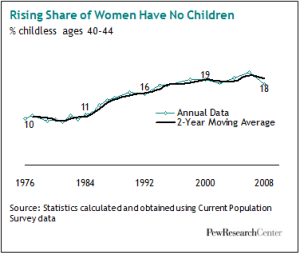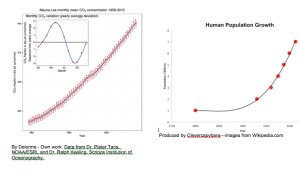“Let each of us honor someone who does not have children.â€
                                 Ecologist Jim Schenk
           I stopped in a store on Main Avenue to buy a Christmas present. When I returned the proprietor’s greeting and asked how he was, he replied honestly. “Not too goodâ€. He had just broken up with his girlfriend.
He went on to explain that they had been together for a long time, but were splitting up over her wish to have a child. He explained that he did not want the responsibility of parenting.
A Brit who subscribes to my monthly Population Matters! emails wrote: “For your next email to us in a month or so, would you perhaps consider discussing why women [feel they need to] have babies; and why it is not questioned? It brings reproductive rights in conflict with the planet very starkly. Is anything so important so not discussed?â€
Finally, I was talking with the director of a nonprofit. She told me that the day, August first, was International Childfree Day. There is Mothers’ Day and Fathers’ Day, but I had never heard of Childfree Day. “People like me don’t get much recognition!†she exclaimed.
These events lead me to write about the option of not having children. We tacitly assume that women will contribute one or more babies to the human family: our society is pronatalist. This is especially true in some religions that encourage large families. The book “Confessions of a Later Day Virgin†brings this out well, with humor. The author, Nicole Hardy, had no idea that a Mormon woman could be childfree until she read Terry Tempest Williams’ “Refugeâ€. Williams and her husband are both Mormons, and childfree.
Despite our pronatalist society, some people elect not to bear children—they are voluntarily childless. There are many reasons for this, including religious (e.g. nuns and priests), dedication to work and the huge responsibility of being a parent—like my Main Avenue salesman. In the past being childfree required sexual abstinence, but that is no longer the case—fortunately!
There is another, important reason to be childfree. From time to time I hear from patients that they want to limit their fertility because of their concern about overpopulation.
The woman who started International Childfree Day, Laura Carroll, is married but childfree. She has studied pronatalism in our culture, as well as the effect of bearing children on individuals and on our society. She suggests several “Alternative Assumptions†in her book, “The Baby Matrixâ€. One alternative assumption is that there is no need for almost everyone to parent. We have already “been fruitful and multiplied†and now increasing our numbers is counterproductive. Another Alternative Assumption: parenthood should be a conscious decision.
What will happen when I’m old if I don’t have children? In many societies the only social security is family—especially children. That is no longer so true in our society, where families are often geographically spread out. Carroll’s Alternative Assumption is: “Finding my elderhood support structure is my responsibility.â€
You want to parent? Carroll also writes about the advantages of bearing just one child. She dispels the myth that “only†children have problems; indeed, they tend to excel. Then she dispels myths about adoption, which she says is easier and less expensive than rumored. She suggests adoption for second and subsequent children for parents who want more than one. She points out that our human population is already unsustainable. “Having fewer, not more, biological offspring is the true humanitarian act because it ultimately lessens the
suffering of people and the world’s natural environment.â€
Don’t childfree people miss out on a lot? Yes—but what they miss out on is both good and bad. Dirty diapers aren’t that much fun! Is it possible to weigh the pros and cons of parenting versus a childfree lifestyle? Of course that comparison will vary immensely from person to person. However an analysis of the responses of almost 2 million people in the USA, after controlling for factors such as marital status and income, “…the presence of a child has a small negative association with life evaluation….†Put simply, childfree adults are happier!
The number of childfree women is increasing. Whereas 40 years ago only one in ten women in the USA spent her life without bearing a child, now the figure is closer to one in six. This is good for the planet, and good for the people who do not want to parent. We should honor and support them in this choice.
© Richard Grossman MD, 2016

